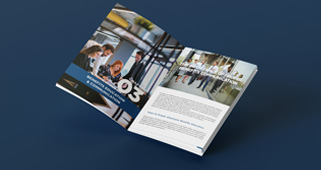As we approach 2025, the landscape of employee benefits is poised for significant transformation. This evolution is driven by a confluence of factors including technological advancements, changing workforce demographics, evolving employee expectations, and shifts in regulatory landscapes. Employers and HR professionals must stay informed about these changes to offer competitive and effective benefits packages. In this blog, we will explore the anticipated trends, challenges, and innovations shaping the future of employee benefits, providing a comprehensive outlook for 2025.
The Changing Landscape of Employee Benefits
1. Technological Advancements
Technology continues to revolutionize how benefits are managed and delivered. Here’s a look at some key technological trends shaping the future of employee benefits:
- AI and Automation: Artificial Intelligence (AI) and automation are expected to play a significant role in benefits administration. AI-driven platforms can provide personalized benefits recommendations, automate routine tasks such as enrollment and claims processing, and offer advanced data analytics to help employers make informed decisions.
- Benefits Platforms: Integrated benefits platforms that offer a one-stop-shop for all benefits-related needs are becoming more prevalent. These platforms provide employees with a centralized location to view, select, and manage their benefits, leading to a more streamlined and user-friendly experience.
- Telemedicine: The growth of telemedicine has accelerated during the COVID-19 pandemic and is expected to remain a critical component of employee health benefits. Telemedicine allows employees to access healthcare services remotely, improving convenience and accessibility.
2. Evolving Employee Expectations
Employee expectations regarding benefits are evolving, driven by changing workforce demographics and shifting priorities. Here’s how these expectations are influencing benefits offerings:
- Holistic Well-being: Employees increasingly seek benefits that support their overall well-being, including mental health, financial wellness, and work-life balance. Employers are expanding their benefits packages to include resources and support for mental health, financial planning, and wellness programs.
- Flexibility and Personalization: There is a growing demand for flexible and personalized benefits. Employees want the ability to customize their benefits packages to meet their individual needs and preferences. This trend is leading to the rise of flexible benefits plans and choice-based benefits options.
- Work-Life Integration: As remote and hybrid work models become more common, employees are looking for benefits that support work-life integration. This includes benefits such as flexible work hours, remote work stipends, and family support programs.
3. Shifts in Workforce Demographics
The workforce is becoming increasingly diverse, and employers must adapt their benefits offerings to address the needs of different demographic groups:
- Generational Diversity: With multiple generations working side-by-side, from Baby Boomers to Gen Z, benefits packages need to cater to a wide range of preferences and needs. For example, younger employees may prioritize student loan repayment assistance, while older employees might focus on retirement planning and health benefits.
- Diverse Family Structures: Modern family structures are diverse, including single-parent families, same-sex couples, and multi-generational households. Benefits packages must be inclusive and accommodate various family structures, including fertility benefits, adoption assistance, and caregiving support.
4. Regulatory Changes
Regulatory changes continue to impact the benefits landscape. Key regulatory trends and considerations include:
- Healthcare Regulations: Healthcare regulations are expected to evolve, potentially impacting benefits related to health insurance, telemedicine, and wellness programs. Employers must stay informed about changes to ensure compliance and adapt their benefits offerings accordingly.
- Data Privacy and Security: With the increasing use of technology and data analytics in benefits administration, data privacy and security are critical concerns. Regulations related to data protection, such as the General Data Protection Regulation (GDPR) and the California Consumer Privacy Act (CCPA), will continue to shape how employee data is handled and protected.
- Paid Leave Policies: Paid leave policies, including parental leave, sick leave, and paid family leave, are gaining attention from policymakers. Employers may need to adjust their benefits offerings to align with new regulations and support employees’ needs for paid time off.
Trends Shaping Employee Benefits in 2025
1. Enhanced Focus on Mental Health and Well-being
The importance of mental health and well-being is increasingly recognized, and this trend is expected to continue into 2025. Employers are expanding their benefits packages to include:
- Mental Health Resources: Comprehensive mental health support, including counseling services, mental health apps, and Employee Assistance Programs (EAPs), will become more prevalent. Employers are focusing on reducing stigma and providing accessible mental health resources.
- Workplace Wellness Programs: Wellness programs that address both physical and mental health will be integral to benefits offerings. This includes initiatives such as fitness challenges, stress management workshops, and mindfulness training.
- Financial Wellness: Financial stress is a significant concern for many employees. Benefits that support financial wellness, including financial planning services, debt management assistance, and student loan repayment programs, will be increasingly important.
2. Greater Emphasis on Flexible Benefits
Flexibility and personalization are key trends in employee benefits. Employers are adopting flexible benefits models to meet diverse employee needs:
- Choice-Based Benefits: Employers are offering choice-based benefits plans that allow employees to select from a range of options based on their preferences and needs. This could include options for health insurance, dental and vision coverage, and additional perks such as pet insurance or travel benefits.
- Flexible Spending Accounts (FSAs) and Health Savings Accounts (HSAs): FSAs and HSAs will continue to be popular choices for managing healthcare expenses. Employers are providing more education and resources to help employees make the most of these accounts.
- Benefit Customization: Personalized benefits options, such as customizable wellness programs and tailored financial planning resources, will become more common. Employers will use data and analytics to offer benefits that align with individual employee needs.
3. Integration of Technology and Benefits
Technology will play a crucial role in shaping the benefits landscape in 2025. Key technological advancements include:
- AI-Powered Benefits Platforms: AI-driven benefits platforms will offer personalized recommendations, streamline administrative tasks, and provide valuable insights into employee needs and preferences.
- Blockchain for Benefits Administration: Blockchain technology may be used to enhance the security and transparency of benefits administration. This could include secure storage of benefits data and streamlined processing of claims.
- Virtual Benefits Counseling: Virtual benefits counseling and support will become more prevalent, providing employees with access to expert guidance and resources from the comfort of their homes.
4. Evolution of Paid Leave and Family Support
Paid leave and family support benefits will continue to evolve, reflecting changing societal norms and employee needs:
- Expanded Parental Leave: Employers are expected to offer more generous parental leave policies, including paid leave for both mothers and fathers, as well as support for adoption and surrogacy.
- Family Care Benefits: Benefits that support family caregiving, such as eldercare assistance and childcare support, will become increasingly important as employees balance work and family responsibilities.
- Paid Sick Leave: Paid sick leave policies will continue to gain traction, with more employers offering paid sick leave to support employees’ health and well-being.
Challenges and Considerations for Employers
1. Balancing Cost and Value
One of the primary challenges for employers is balancing the cost of benefits with the value provided to employees. As benefits packages become more comprehensive and personalized, managing costs while maintaining competitive offerings will be crucial. Employers must carefully evaluate the return on investment for different benefits and consider innovative solutions to manage costs effectively.
2. Ensuring Compliance
Navigating the complex regulatory landscape is a significant challenge for employers. Staying compliant with evolving regulations related to healthcare, data privacy, and paid leave requires ongoing attention and expertise. Employers should work with legal and compliance professionals to ensure that their benefits offerings adhere to all applicable laws and regulations.
3. Addressing Diverse Employee Needs
Meeting the diverse needs of a multi-generational and diverse workforce can be challenging. Employers must offer benefits that cater to a wide range of preferences and needs while maintaining equity and inclusivity. Tailoring benefits to address the needs of different demographic groups and providing flexible options will be key to addressing this challenge.
4. Managing Data Privacy and Security
With the increasing use of technology in benefits administration, managing data privacy and security is a critical concern. Employers must implement robust data protection measures to safeguard employee information and comply with data privacy regulations. This includes using secure technology platforms, conducting regular security audits, and educating employees about data protection.
Case Study: Innovative Benefits in Action
To illustrate the evolving landscape of employee benefits, let’s examine a case study of a company that has successfully adapted its benefits offerings to meet the changing needs of its workforce.
Company Background
XYZ Corporation, a technology company with a diverse workforce, recognized the need to modernize its benefits offerings to align with employee expectations and industry trends. The company embarked on a comprehensive benefits redesign to address mental health, flexibility, and technology integration.
Key Initiatives
- Holistic Well-being Program: XYZ Corporation launched a holistic well-being program that includes mental health resources, financial wellness support, and wellness challenges. The program provides employees with access to counseling services, financial planning tools, and wellness activities.
- Flexible Benefits Platform: The company implemented a choice-based benefits platform that allows employees to customize their benefits packages based on their preferences. This platform offers a range of options, including health insurance, retirement plans, and additional perks such as gym memberships and pet insurance.
- AI-Powered Benefits Administration: XYZ Corporation adopted an AI-driven benefits platform to streamline benefits administration and provide personalized recommendations. The platform uses data analytics to offer tailored benefits options and automate routine tasks such as enrollment and claims processing.
- Expanded Paid Leave Policies: The company updated its paid leave policies to include more generous parental leave, paid sick leave, and family care benefits. This includes paid leave for both parents, support for adoption and surrogacy, and assistance with eldercare and childcare.
Results
The benefits redesign resulted in increased employee satisfaction and engagement. Employees appreciated the flexibility and personalization of the new benefits offerings, and the holistic well-being program contributed to improved overall well-being. The AI-powered benefits platform streamlined administration and provided valuable insights for ongoing improvements.
Conclusion
As we look ahead to 2025, the outlook for employee benefits is characterized by technological advancements, evolving employee expectations, and regulatory changes. Employers must navigate these trends and challenges to create benefits packages that meet the needs of a diverse and dynamic workforce.
By embracing innovation, focusing on holistic well-being, and leveraging technology, employers can offer competitive and effective benefits that support their employees’ needs and contribute to organizational success. Staying informed about emerging trends and working with benefits experts will be key to staying ahead in the ever-evolving benefits landscape.






